Disclosure: This article contains affiliate links. We may earn a commission from purchases at no extra cost to you, which helps our travel content.
Standing at the intersection of China's imperial past and its meteoric rise to global prominence, Shanghai captivated me from the moment I first stepped foot on its bustling streets three years ago. Having explored over 40 countries across five continents, I can confidently say few cities balance tradition and innovation with such graceful contradiction. On my recent autumn return to this sprawling metropolis, I dedicated myself to uncovering experiences that best showcase Shanghai's dual identity—where incense-filled temples share neighborhoods with architectural marvels that pierce the clouds. For university students looking to maximize a week in Shanghai without breaking the bank, I've curated seven cultural experiences that reveal the soul of this fascinating city. From dawn tai chi sessions along the Bund to midnight street food adventures in glittering alleyways, these carefully selected experiences offer an authentic glimpse into a city perpetually caught between reverence for its past and excitement for its future.
1. Dawn Rituals at Jing'an Temple: Where Ancient Prayers Meet Modern Devotion
My Shanghai mornings always begin the same way—slipping through the ornate entrance of Jing'an Temple just as the city awakens. Dating back to 247 AD, this Buddhist sanctuary sits improbably amid gleaming skyscrapers on West Nanjing Road, creating one of Shanghai's most striking visual contrasts.
During my most recent visit, I arrived at 7:00 AM to witness local devotees performing their morning rituals. The temple complex was already alive with activity—monks in saffron robes tending to sacred duties, elderly Shanghainese lighting incense bundles with practiced precision, and the hypnotic chanting of sutras floating through courtyards.
What makes this experience particularly special is the juxtaposition. As you stand in the main courtyard, the 7-ton Ming Dynasty jade Buddha sits serenely while the ultramodern skyline forms a dramatic backdrop. I found myself transfixed by this perfect encapsulation of Shanghai's identity—ancient traditions thriving within one of Earth's most forward-looking cities.
The temple's renovation in 2010 restored its golden splendor while maintaining historical integrity. I spent nearly two hours exploring its three main halls, each more magnificent than the last. The Hall of Heavenly Kings features four imposing guardian deities, while the Grand Hall houses three golden Buddhas representing past, present, and future.
For photography enthusiasts, I recommend bringing a camera lens filter to manage the challenging lighting conditions created by incense smoke catching the morning sunlight—it creates ethereal images that capture the temple's mystical atmosphere.

💡 Pro Tips
- Visit between 7-9 AM to witness morning prayers and avoid tourist crowds
- Remove shoes before entering certain prayer halls and never point feet toward Buddha statues
- Purchase incense at the temple entrance rather than from street vendors outside to support temple maintenance
2. Cultural Collision in Tianzifang: Shikumen Architecture Reimagined
Few places in Shanghai capture the city's transformation quite like Tianzifang. Nestled in the former French Concession, this maze of narrow alleyways and traditional shikumen houses has evolved from residential neighborhood to creative district without sacrificing its architectural soul.
On my third day in Shanghai, I deliberately got lost among Tianzifang's labyrinthine lanes. The neighborhood's metamorphosis began in the early 2000s when artists began converting ground-floor residences into studios and galleries. Today, it houses over 200 businesses—from avant-garde art spaces to boutique shops selling handcrafted items you won't find in Shanghai's ubiquitous malls.
What makes Tianzifang special is how organically it developed. Unlike Xintiandi (another shikumen neighborhood that underwent a more commercial renovation), Tianzifang retained its residential character. As you explore, you'll notice laundry still hanging from upper windows while contemporary art exhibitions take place below—a living museum of Shanghai's evolution.
I spent an afternoon chatting with Chen Wei, a third-generation resident who now runs a traditional paper-cutting workshop from his family's former living room. "Twenty years ago, this was just our home," he told me while demonstrating the intricate cutting technique. "Now I teach visitors from around the world while still living upstairs. That's Shanghai—we don't replace the old; we build something new within it."
Beyond art galleries, Tianzifang offers culinary adventures ranging from traditional Shanghainese cuisine to experimental fusion restaurants. I particularly recommend Café Dan, tucked away on Lane 248, where locally-roasted coffee is served alongside classic Shanghainese breakfast items—a delicious metaphor for the neighborhood itself.

💡 Pro Tips
- Visit on weekday mornings to avoid weekend crowds that can make the narrow lanes nearly impassable
- Bring cash as many smaller shops don't accept foreign credit cards
- Look up! The most interesting architectural details are often above eye level
3. The Urban Sanctuary: Yu Garden and Old City Bazaar
While Shanghai races toward the future, Yu Garden (Yuyuan) stands as a masterclass in Ming Dynasty design principles—a 400-year-old sanctuary that has survived war, occupation, and revolutionary zeal. Located in Shanghai's Old City, this five-acre classical garden represents Chinese landscaping at its most sophisticated.
During my visit last October, I arrived at Yu Garden just as it opened at 8:30 AM—a strategy I cannot recommend strongly enough. By midday, the garden's tranquility disappears under waves of tour groups, but in those early hours, you can experience the garden as its creators intended: a place for contemplation and scholarly reflection.
Yu Garden consists of six main areas separated by dragon walls (undulating walls with gray tiles and white ridges). Each section reveals new delights: koi-filled ponds, pavilions perched over water, carefully positioned rockeries, and 40 different architectural structures connected by winding corridors. The garden's crowning jewel is the Exquisite Jade Rock—a 5-ton boulder said to have been salvaged from a shipment intended for the imperial court.
What struck me most was how Yu Garden creates the illusion of expansiveness within a relatively compact space—a principle called borrowed scenery in Chinese garden design. As I sat beside the Hall of Heralding Spring, I pulled out my travel journal to capture my impressions of how each turn in the path reveals a perfectly framed view, making the garden feel endless despite its modest size.
After exploring the garden, venture into the surrounding bazaar. While admittedly commercialized, it offers excellent opportunities to sample local specialties like xiaolongbao (soup dumplings) at Nanxiang Mantou Dian—a century-old establishment where I happily joined the queue of locals and visitors alike. The contrast between the garden's serene beauty and the bazaar's commercial energy perfectly encapsulates Shanghai's dualistic character.

💡 Pro Tips
- Purchase tickets online to avoid queues, especially during Chinese holidays
- Hire a garden guide (available at the entrance) to understand the symbolic meanings behind design elements
- Visit on a weekday morning and start with the furthest sections first to temporarily escape tour groups
4. Sunset Transformation: The Bund's Architectural Time Travel
No cultural exploration of Shanghai would be complete without experiencing The Bund at sunset—that magical hour when the city's past and future face each other across the Huangpu River in a spectacular architectural standoff.
The Bund (Waitan) stretches for one mile along the western bank of the Huangpu, showcasing 52 buildings representing various Western architectural styles—Gothic, Romanesque, Baroque, Neoclassical, and Art Deco—all constructed during Shanghai's colonial period. Across the river stands Pudong's futuristic skyline, dominated by the Oriental Pearl Tower, Shanghai Tower, and other ultramodern skyscrapers.
During my recent visit, I arrived at The Bund around 5:00 PM to secure a prime viewing spot along the promenade. As the sun began its descent, I watched in awe as the colonial-era buildings behind me took on a golden glow while Pudong's glass-and-steel towers across the river prepared for their nightly light show.
This juxtaposition offers perhaps the most vivid visual representation of Shanghai's dual identity—a city simultaneously honoring its complex past while boldly embracing its future ambitions. The buildings on The Bund once housed powerful foreign banks and trading houses during Shanghai's semi-colonial era—a complicated period in Chinese history that the city acknowledges rather than erases.
For the best experience, I recommend walking the full length of the promenade, starting from Yan'an Road and heading north. Each building has a story, from the former HSBC Building (now home to the Shanghai Pudong Development Bank) with its magnificent mosaic ceiling to the green copper dome of the former Customs House.
As darkness falls, Pudong's skyline erupts in a choreographed light display that reflects dramatically on the river's surface. For capturing this spectacular transition from day to night, I rely on my travel tripod, which is lightweight enough to carry all day but sturdy enough for long-exposure shots of the illuminated cityscape.

💡 Pro Tips
- Visit on clear weekdays to avoid the weekend crowds that can make photography challenging
- Download the 'Bund Audio Tour' app for fascinating historical context about each building
- After sunset, walk to nearby Nanjing Road for dinner or continue north to the less crowded North Bund area for alternative skyline views
5. Cultural Immersion Through Modern Art: M50 Creative Park
While Beijing may be considered China's historical art center, Shanghai has emerged as the country's contemporary art capital—and nowhere showcases this creative energy better than M50 Creative Park. Housed in a former textile mill along Suzhou Creek, this industrial-chic complex has been transformed into Shanghai's premier art district.
On my fourth day in Shanghai, I dedicated an entire afternoon to exploring M50's galleries, studios, and installation spaces. Unlike the commercial art malls that have sprouted across the city, M50 maintains an authentic, gritty edge that attracts serious artists and collectors alike.
What makes M50 culturally significant is how it offers insight into China's evolving artistic expression. Here, you'll find works that subtly (and sometimes not so subtly) comment on rapid urbanization, consumerism, environmental concerns, and social change—themes that might be difficult to discuss openly in other contexts but find freedom of expression through art.
I was particularly moved by an exhibition at ShanghART Gallery featuring young Shanghainese artists exploring their complicated relationship with the city's disappearing neighborhoods. Through mixed media installations incorporating salvaged materials from demolished shikumen houses, these artists created powerful statements about preservation and progress.
Beyond the established galleries, M50's charm lies in the opportunity to interact directly with working artists. Many maintain open studios where you can watch their creative process and discuss their work. I spent an enlightening hour chatting with Liu Wei, a painter combining traditional Chinese ink techniques with contemporary subjects, who explained how his generation navigates between cultural heritage and global influences.
For students interested in art, I recommend joining one of the weekly English-language tours (Saturdays at 2 PM) led by local art students who provide context about China's contemporary art scene. These tours often include studio visits not normally open to the public—offering rare behind-the-scenes access to Shanghai's creative community.

💡 Pro Tips
- Visit on Tuesday-Friday to avoid weekend crowds and have more meaningful interactions with artists
- Don't hesitate to enter galleries that look closed—many operate with an informal open-door policy
- Check M50's official WeChat account for exhibition openings, which often include free drinks and opportunities to meet artists
6. Culinary Heritage: Street Food Tour in Old Shanghai
For a truly immersive cultural experience in Shanghai, one must venture beyond museums and monuments into the realm of culinary traditions. During my week in the city, I joined a small-group evening food tour through the backstreets of Old Shanghai—an experience that revealed more about the city's cultural identity than any guidebook could convey.
Our journey began at dusk in the atmospheric lanes near Laoximen, one of Shanghai's oldest neighborhoods (and rapidly disappearing due to urban development). Our guide, Ms. Zhou, a retired schoolteacher with encyclopedic knowledge of Shanghai's food history, explained how the city's cuisine reflects its cosmopolitan past and strategic location at the mouth of the Yangtze River.
"Shanghai cuisine is like Shanghai itself—influenced by many regions but with its own distinct character," Ms. Zhou explained as we sampled our first dish: sheng jian bao (pan-fried pork buns) from a tiny family-run shop that has used the same recipe for three generations. The contrast between the crispy bottom, fluffy sides, and soup-filled interior creates a perfect metaphor for Shanghai's layered identity.
As night fell, we ventured deeper into residential areas where tourists rarely tread. At each stop, Ms. Zhou contextualized the dishes within Shanghai's cultural narrative—from hong shao rou (red-braised pork) that reflected the city's proximity to Jiangsu Province to influenced-influenced breakfast items that hinted at Shanghai's international trading past.
The highlight came at a streetside stall where an elderly couple has been making cong you bing (scallion pancakes) for over 40 years. The husband deftly rolled the dough while his wife managed the sizzling pan, creating perfectly layered pancakes with crisp exteriors and chewy centers. "This technique," Ms. Zhou whispered, "is disappearing as younger generations choose different paths."
To document these ephemeral culinary traditions, I used my smartphone gimbal to capture smooth video footage of the artisans at work—creating a visual record of food preparation methods that may not survive another generation.

💡 Pro Tips
- Book food tours led by local residents rather than international companies for more authentic experiences
- Bring small denominations of yuan as most street vendors don't accept cards or large bills
- Learn basic Shanghainese food terms—even simple phrases will delight vendors and might earn you extra portions
7. Future Shanghai: Urban Planning Exhibition Center
To truly understand Shanghai's cultural identity, one must look not only at its past and present but also at its ambitious vision for the future. The Shanghai Urban Planning Exhibition Center in People's Square offers precisely this forward-looking perspective—making it my final recommended cultural experience.
Housed in a striking five-story building, this interactive museum showcases Shanghai's transformation from modest trading port to global metropolis, with particular emphasis on development plans extending to 2040 and beyond. While this might sound dry on paper, the execution is anything but—the center employs cutting-edge technology to create an engaging narrative about urban evolution.
The undisputed centerpiece is the third floor's massive scale model of central Shanghai, covering over 6,500 square feet and depicting every building in the city center with astonishing detail. What makes this model particularly fascinating is that it includes not just existing structures but also approved future developments—allowing visitors to visualize how the cityscape will transform over coming decades.
"We don't just preserve our past; we actively design our future," explained Mr. Lin, a center docent who noticed me photographing particular sections of the model. "This isn't just urban planning—it's cultural planning. We're deciding what Shanghai will mean to the next generation."
Beyond the scale model, interactive exhibits explore Shanghai's solutions to challenges facing all modern megacities: environmental sustainability, transportation, housing affordability, and the balance between development and preservation. Virtual reality stations allow visitors to "walk through" planned neighborhoods and transportation hubs decades before they exist.
What struck me most was how the exhibition frames urban development as a cultural conversation rather than merely a technical exercise. Video installations feature ordinary Shanghainese discussing their hopes and concerns about the city's evolution—a refreshingly inclusive approach to urban planning.
For students of architecture, urban studies, or anyone interested in how cities evolve, I recommend the English audio guide (¥40) that provides crucial context about China's approach to urban development. The center also offers excellent architecture books in its gift shop—perfect for deepening your understanding of the city's architectural philosophy.

💡 Pro Tips
- Visit on weekday afternoons when school groups are less common and you can take your time with the exhibits
- Download the center's app for additional augmented reality features that work with certain displays
- Head to the fifth-floor observation deck for panoramic views of People's Square and compare the real cityscape to the models you've just studied
Final Thoughts
As my week in Shanghai drew to a close, I found myself reflecting on how this remarkable city refuses to be defined by a single narrative. Unlike European cities that often preserve their historical centers while developing modern districts elsewhere, Shanghai boldly integrates its past, present, and future within the same urban fabric—creating cultural experiences that are uniquely layered and complex. For students visiting Shanghai, these seven experiences offer more than just tourist attractions; they provide windows into understanding China's broader journey of modernization while maintaining cultural continuity. Whether watching morning prayers at Jing'an Temple, exploring contemporary art at M50, or contemplating Shanghai's future at the Urban Planning Center, you're witnessing a city actively negotiating its identity in real-time. This fall is the perfect moment to experience Shanghai's cultural duality, as comfortable temperatures and clear skies create ideal conditions for exploration. As you plan your own Shanghai adventure, remember that the city's greatest cultural offering isn't found in any single landmark but in the fascinating contradictions that exist at every turn.
✨ Key Takeaways
- Shanghai's most authentic cultural experiences blend traditional elements with modern contexts
- Morning and evening hours offer the best opportunities to experience the city's distinctive atmosphere
- Local guides provide crucial context for understanding Shanghai's rapid transformation
- Food remains one of the most accessible ways to understand Shanghai's cultural identity
- The city's future development plans are as culturally significant as its historical sites
📋 Practical Information
Best Time to Visit
September-November (fall)
Budget Estimate
¥3,000-5,000 ($450-750) for one week excluding flights
Recommended Duration
5-7 days
Difficulty Level
Intermediate
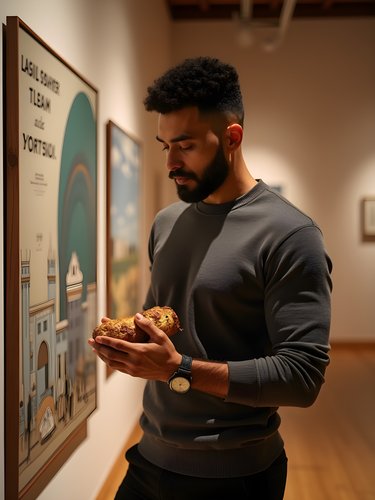
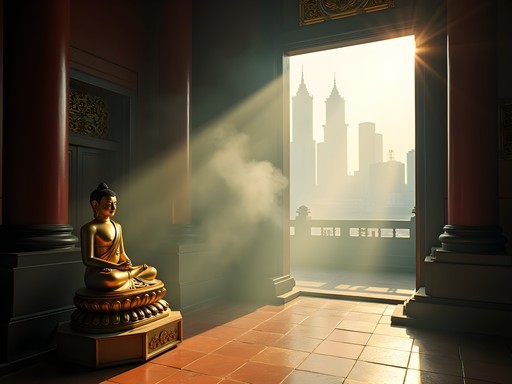







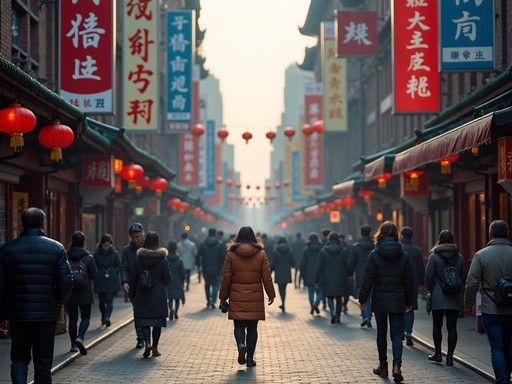



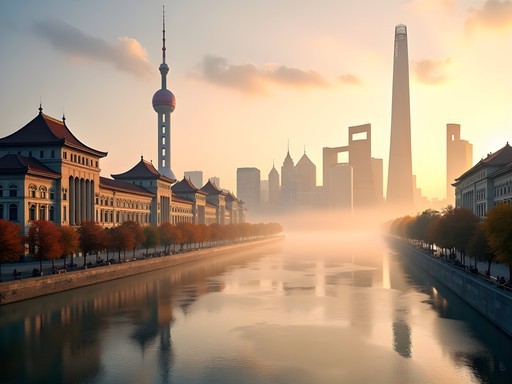
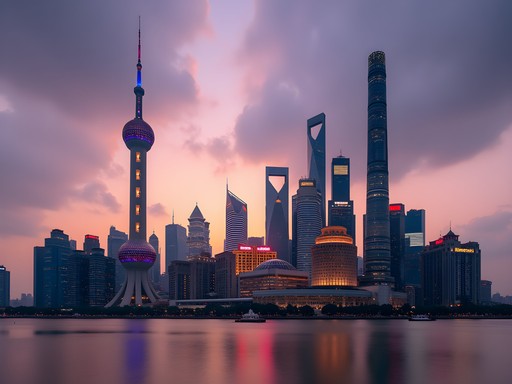
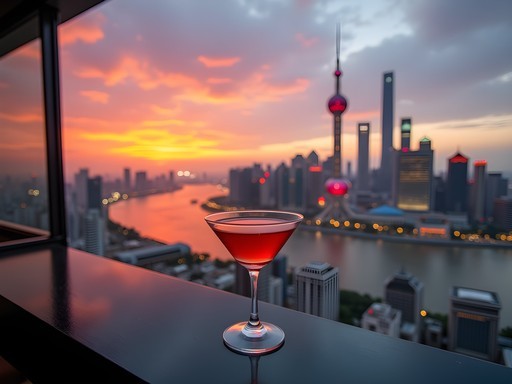
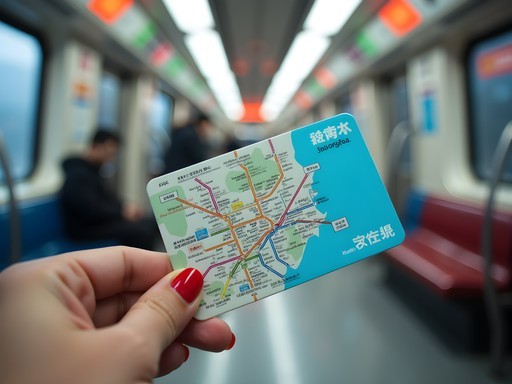
Comments
dreamhero
How easy is it to get around between these places? Is the metro system easy to navigate for someone who doesn't speak Chinese?
Timothy Jenkins
The metro is super easy! All signs are in English and Chinese, and stations announce stops in both languages. It's clean, efficient, and ridiculously affordable. Just download the Shanghai Metro app before you go - it works offline and is a lifesaver.
Hayden Butler
Your post transported me right back to Shanghai! My experience at Yu Garden was similar but with an unexpected twist. I arrived early one morning, just as vendors were setting up in the bazaar. An elderly gentleman was demonstrating traditional brush painting near the entrance. After watching for a while, he invited me to try. My attempt was laughably bad, but that impromptu art lesson became one of my fondest memories of the trip. The garden itself is most peaceful before 10am - I wandered through with almost no one else around, just the occasional groundskeeper. I highly recommend bringing a good pocket guidebook as some of the symbolic elements are easy to miss. I used my Shanghai pocket guide which had excellent explanations of the garden's feng shui principles.
Bryce Diaz
Timothy, you've captured the soul of Shanghai beautifully. On my third visit there last year, I discovered a hidden gem you might enjoy next time - the 1930s underground jazz clubs in the former French Concession. Amazing how these spaces preserve the city's cosmopolitan history! For anyone planning a visit, I highly recommend exploring beyond the main attractions. The wet markets early morning are fascinating cultural experiences, and the marriage market at People's Park on weekends is a window into modern Chinese family dynamics. I found the Shanghai Lonely Planet incredibly helpful for finding these off-the-beaten-path spots. The contrast between ancient temples and futuristic skyscrapers never gets old!
tripadventurer
Bryce - the marriage market! Yes! Such a fascinating cultural experience. Parents with umbrellas displaying their children's stats like a human classified ad section. Did you talk to any of the parents?
Bryce Diaz
I did! My guide translated for me. One mother was so proud listing her son's apartment ownership and salary. Quite the eye-opener about modern priorities!
wavestar2135
Love the contrast between the Bund and Pudong! Great photos!
journeyone4986
Just got back from Shanghai and your post is bringing back all the feels! The Bund at sunset is EVERYTHING! We stood there for like an hour watching the lights come on. Pure magic!
moonking
The Bund is amazing! Did you try any of the rooftop bars?
journeyone4986
Yes! We went to Vue Bar - pricey drinks but the view was worth every yuan!
tripadventurer
The dawn rituals at Jing'an Temple were magical! I went there last spring and it was such a peaceful experience watching locals practicing tai chi and burning incense while the city was just waking up. Totally worth the early alarm. I also loved Tianzifang but found it gets super crowded by midday. If you go early (around 9am) you can actually enjoy the narrow lanes and cute shops without feeling like a sardine! Timothy, did you try any of the local breakfast spots near the temple? There was this amazing place serving the best jianbing I've ever had!
Dylan Turner
Timothy, your analysis of Shanghai's cultural duality is spot on. I visited last fall and was equally captivated by the juxtaposition of ancient and modern. One thing I'd add about Tianzifang - try to visit on a weekday morning if possible. We went twice - once on a Saturday afternoon (absolute madness) and again on a Tuesday morning. The difference was remarkable. You could actually appreciate the architecture and artisan shops without being swept along by crowds. Also, there's a small tea house tucked away on the second floor of one of the buildings in Lane 210 that offers an excellent traditional tea ceremony with stunning views of the alleyways below.
vacationtime
Great post! I'm heading to Shanghai next month. How early should I go to Jing'an Temple to see those morning rituals you mentioned?
Timothy Jenkins
I'd recommend getting there around 6:30-7am. The rituals usually start early, and there's something magical about seeing the temple before the crowds arrive. Bring a light jacket - mornings can be chilly!
vacationtime
Thanks so much! Will definitely set my alarm early then. Can't wait!
dreamdiver996
Great post! I'm heading to Shanghai next month for the first time. How did you get around the city? Is the metro easy to navigate for someone who doesn't speak Chinese?
Bryce Diaz
Not the author, but I can tell you the Shanghai metro is incredibly easy to use! All signs are in English and Chinese, the stations are clean and modern, and it's super cheap. Download the MetroMan app before you go - it works offline and made navigating a breeze during my solo trip last fall. The only challenge might be rush hour when it gets packed!
dreamdiver996
Thanks Bryce! That's really helpful. I'll definitely download that app.
adventureguy
Wow Timothy, this post brought back so many memories! I visited Shanghai last year and was completely blown away by the contrast between old and new. The Bund at sunset was definitely my favorite experience - watching the city lights come on while standing next to those colonial buildings was INSANE. I spent hours just walking back and forth taking it all in. Did you try any of the rooftop bars along the Bund? The views are even more spectacular with a drink in hand!
wavestar2135
The Vue Bar at Hyatt on the Bund has amazing views! Pricey drinks but worth it for the photos.
adventureguy
Thanks for the tip! Adding it to my list for next time!
Venture X
Premium card with 2X miles, $300 travel credit, Priority Pass